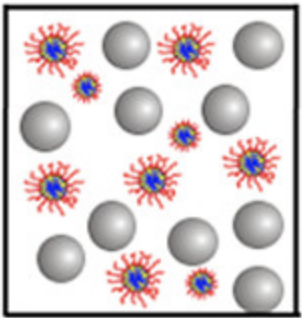Tuning Nanoparticle–Micelle Interactions and Resultant Phase Behavior
The evolution of the interaction between an anionic nanoparticle and a nonionic surfactant and their resultant phase behavior in aqueous solution in the presence of electrolyte and ionic surfactants have been studied. The mixed system of anionic silica nanoparticles (Ludox LS30) with nonionic surfactant decaethylene glycol monododecylether (C12E10) forms a highly stable clear phase over a wide concentration range of surfactant. Small-angle neutron scattering (SANS) and dynamic light scattering data show that the surfactant micelles adsorb on the surface of the nanoparticle, resulting in micellar-decorated nanoparticle structures. With the addition of a small amount of electrolyte into this system, the stability gets disturbed substantially and turns to a two-phase (turbid) system. The evolution of interaction in this system has been examined, and it was found that micelle-induced long-range depletion attraction (modeled by a double Yukawa potential) between nanoparticles leads to their aggregation. Interestingly, the addition of anionic surfactant .....
